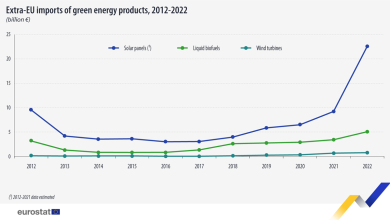Building a better future: Disrupt today to innovate tomorrow
Building a better future: Disrupt today to innovate tomorrow
[eltdf_separator class_name=”” type=”normal” position=”center” color=”” border_style=”” width=”” thickness=”12″ top_margin=”” bottom_margin=””] [eltdf_dropcaps type=”normal” color=”” background_color=””]A[/eltdf_dropcaps]re we moving fast enough and in the right direction? Is the industry really doing all it can to get back on track? These are the key questions that everybody has started to ask, and for good reason. When an industry, a business, a civilization stagnates it is usually due to the fact that it has stopped focusing on evolution. When people do not look for ways to innovate, they settle. At some point, something has to give. World leaders are slowly realizing this. It seems we are currently in a rut. Of course, some people are trying to raise their heads above the water but this should be a team effort. You could argue this point of view and say that innovation is more often than not a result of a happy accident than hard work and dedication. You could not be farther from the truth. Achievements take time. And, most importantly, achievements take risks. You won’t get what you’re after by playing it safe. People have acknowledged this and as a consequence they have started looking at alternative solutions. Changing the game might be a winning strategy. Are we too afraid of the consequences of such changes? Let’s take a look at some ways of shaking things up.Moving away from the tried and true traditions seems to be somewhat of a trend nowadays, everybody in top brass agrees with this. What better evidence than the fact that all the nations are slowly working together towards this common goal? The major themes of the Global Opportunity Report of 2017 were the actions needed to safeguard the future. Concepts like innovation, technology and infrastructure were favoured as always, but the consensus was that it’s high time we looked at things from a different perspective. From smart water technology to combating inequality, the report provides us with new, customer tailored solutions to the world’s problems.
By disrupting the way, we see and do business, we can finally breach that gap between what we think we need and what we actually need. This is a time of daring to think about bigger, more ambitious projects that blend technologies from different industries. Let’s face it, the digital era is upon us; cyber security and artificial intelligence are no longer just a distant dream. Combining these technologies in new and undiscovered ways could yield great results in the long run. Not to mention the good it may do in underdeveloped countries where unexpected markets may emerge overnight. According to the report, the following years will be marked by a sustainable disruption which will use technological innovations to combat inequality, cyber terrorism, soil depletion and climate change. Improvements will be made in many fields, and among these we may surely speak about the oil and energy sectors which at the moment are highly reliant on technological advances to keep afloat.
One of the companies that have really jumped on board of this movement is GE Oil & Gas. During their annual meeting the term ‘disruption’ was virtually dissected by Lorenzo Simonelli, President and CEO, who highlighted the company’s efforts in meeting clients’ demands in new ways. In the three-pronged discussion about human, industrial and digital disruption, product development came first. There is no secret on the market of today that clients no longer appreciate the one size fit all solutions and have become partial to a tailored approach. The company’s project called ‘FastWorks’ aims at including the client in the production cycle, working side by side, sharing ideas, basically co-creating the end result. And the people are the ones who benefit from this. Not only are the customers happy, but Lorenzo Simonelli also highlights that their own employees, the engineers and technologists who work on the projects also feel more fulfilled. It is truly a wonderful feeling to come up with a project that is as close as possible to what the client envisioned.
According to GE, everybody at the meeting was in agreement with the disruption maxim, that producers and suppliers should work together, and so the recent partnership with BP was no surprise. The pilot program aims at combining the software behind GE’s Plant Operation Advisor with BP’s heavy offshore oil production platforms in the Gulf of Mexico. This is only a test run but should it succeed in improving the safety, efficiency and reliability of the gas operations it could become the norm. It should be noted that this endeavour could be GE’s biggest deployment of Predix-powered APM technology.
But this is not all. The company also recently announced collaboration with Total, the French giant. The end goal of this technological partnership is the revamping of centrifugal pump impellers by bringing new additive manufacturing techniques into the mix. Many so called ‘gadgets’ like drones and aerial vehicles, 3D printing and wearable tech are no longer just for the select few, but have made their way into mass production as customers are finally seeing the benefits these technologies might bring to the table. The GE store will continue to be the focal point of sharing technology, research and expertise with the LM900 aero derivative gas turbine serving as a flagship. Seeing as this project started as a GE90 jet engine and ended up powering massive LNG plants by way of GE Aviation technology, the company is certain that cross industry collaboration has a lot more in store for the industry.
It certainly seems that this is a golden age for business opportunities as technology and communication take their rightful place in the world of tomorrow. New and exciting discoveries are just around the corner if we commit to pursuing them. Luckily, the oil and gas industry has and has had its pioneers who continue to keep the industry fresh and on its toes. Science and technology have always been a part of this business and I believe it will prove to be the much-expected messiah in these troubled times. To those who still think digitalization and cross industry collaboration are a dream we can only say this: Sometimes you must run before you can walk.




